What is a dowel hook and where is it used?

In the process of performing repair and construction work, various fasteners are an indispensable element. With their help, various materials are connected to each other or to the base of the structure - drywall, metal, wood, plastic.
Today, one of the most commonly used fasteners is the dowel. The range of such products is quite diverse. This article describes this type of fastener, such as a dowel hook, its features, types, applications and installation methods.
Peculiarities
A dowel hook (also called a hook or a nail) is referred to as a fastener. They are widely used in construction and installation work. Using these products, you can fix installation details on absolutely any surface - concrete, stone, plasterboard, brick or wood.
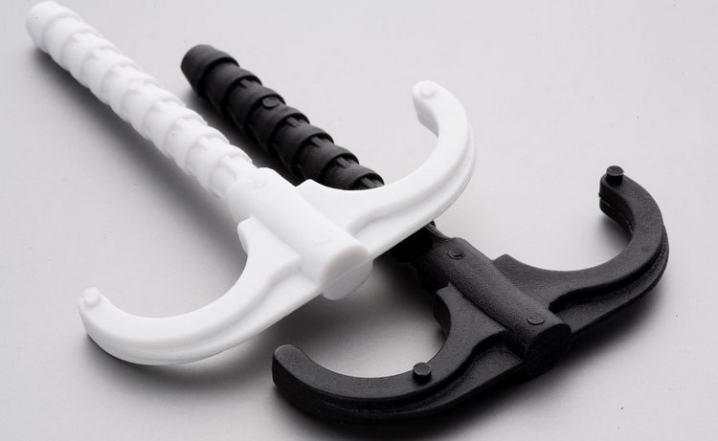
Such a fastening hook is made in the form of a cylindrical rod, consisting of two parts - spacer and non-spacer.
During installation, the spacer element tends to expand in the hole - it is this part of the rod that provides reliable fixation and fastening. But the non-spreading part does not change its shape.
Today this type of fastener is very popular, and this is due to a number of features that are inherent in the product:
- reliability;
- long service life;
- strength;
- wear resistance;
- ensuring a strong and durable connection between fasteners.
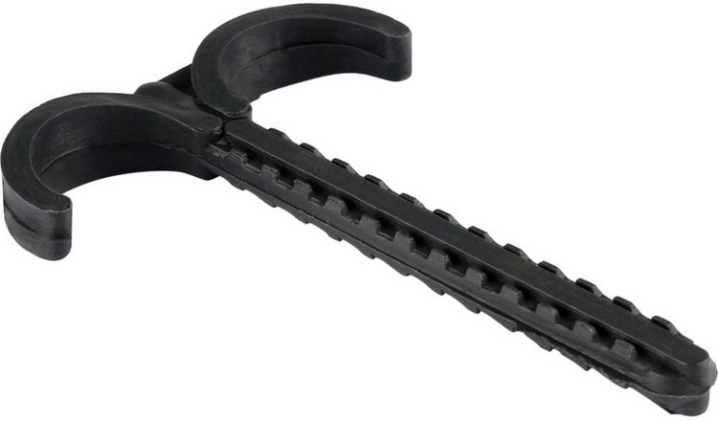
For the manufacture of such dowels, the manufacturer uses only high-quality and safe materials with high physical and technical parameters.
The following materials are involved in the production of such products.
- Nylon (polyamide). It is one of the toughest and most durable materials. It is characterized by resistance to deformation and vibration, wear resistance. The disadvantage of this material is that fasteners made of polyamide are not recommended for use in frosty or rainy weather.
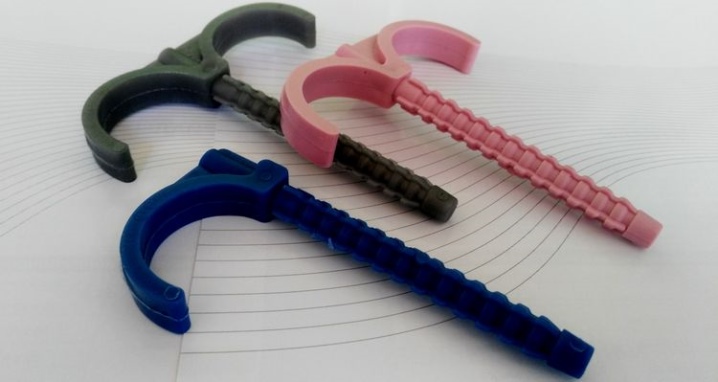
- Polyethylene. Refers to viscous materials, the quality and properties of which are protected even under deformation conditions. It is characterized by frost resistance. But a long service life is not peculiar to it.
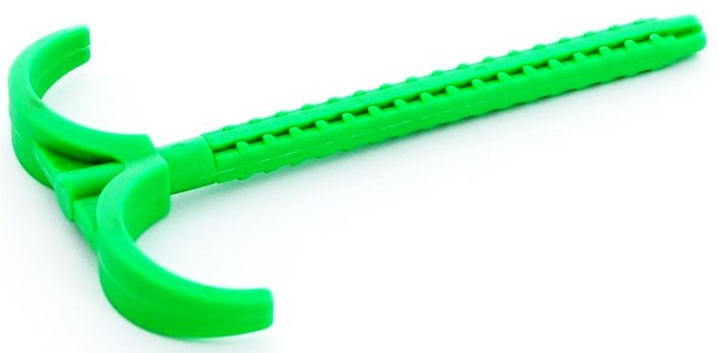
- Polypropylene. High temperature resistant, hard and durable material. It is of higher quality than polyethylene, but it also de-sticks over time.
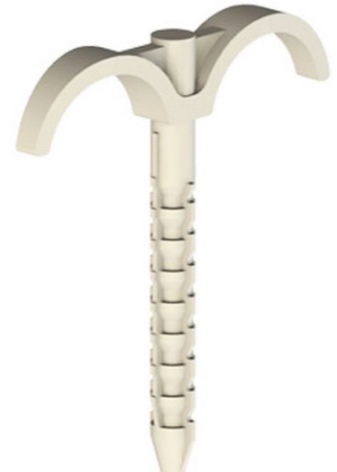
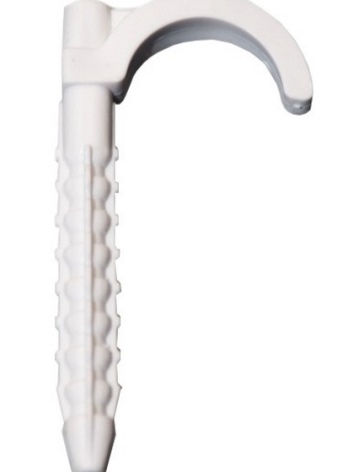
In addition to the above materials, from which the dowel hooks are made, it is worth noting another one that has the highest technical parameters - metal. For the manufacture of such dowels, stainless or galvanized steel is used. It is the metal dowel-hook that is preferred by the consumer. This is due to the fact that it has a great advantage over analogues due to its ability to withstand very high loads.
Types and models
The following assortment of dowel hooks is available on the market.
- Spring (folding). With this fastener, lightweight structures can be attached to gypsum board or chipboard, as well as to any other hollow building material. The range of spring folding dowels is diverse. Most often they buy a model of the M5, M4, M8 brands.
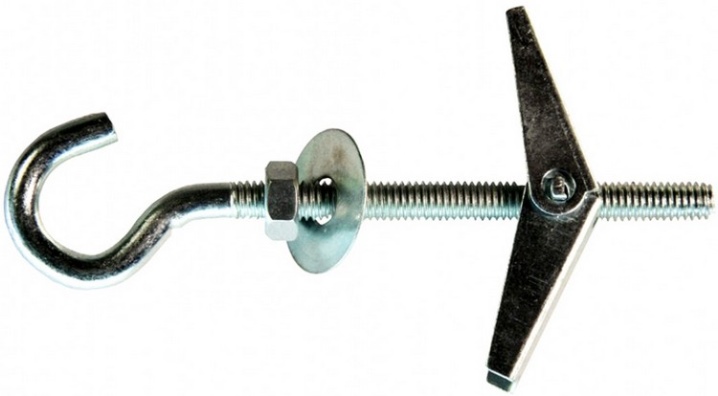
- Single and double. These two types are ideal for fastening pipelines.

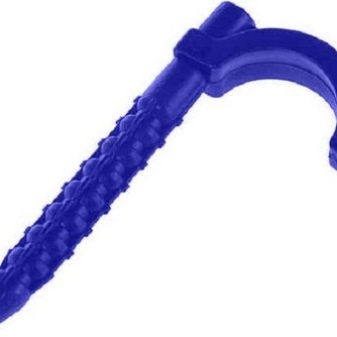
- Spacer. Such a fixing dowel is most often used to install lightweight structures to a concrete, brick or stone base.It is worth noting the expansion dowel with a loop hook 14x120 mm - this model is in demand most of all.
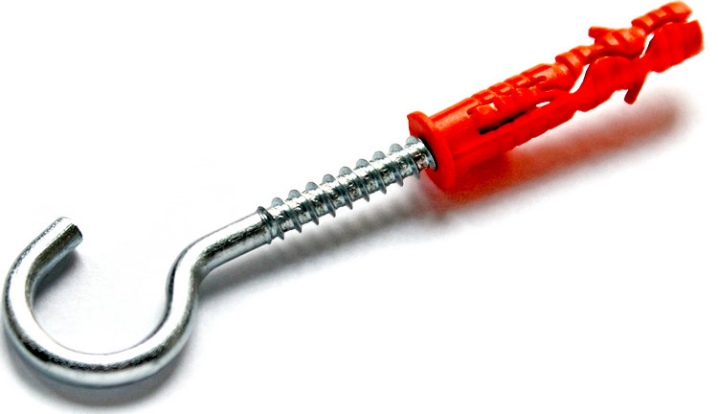
- Straight hook. This version of the dowel can be used if equipment is attached to the wall, on the back of which there are special brackets for fastening. A model with a size of 10x60 mm is in demand, often used for fastening, for example, water heating units to the wall.
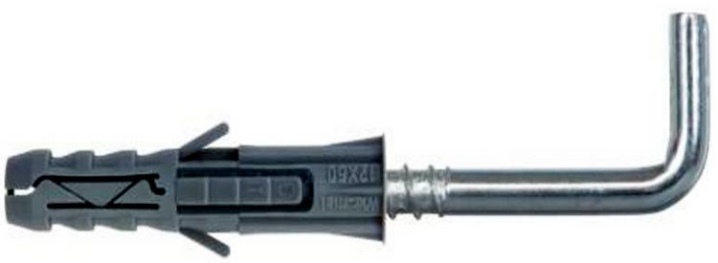
- Semiring. Galvanized steel half-ring makes it possible to use fasteners when working with dense materials, solid silicate and ceramic bricks, gypsum boards, concrete, natural and artificial stone.
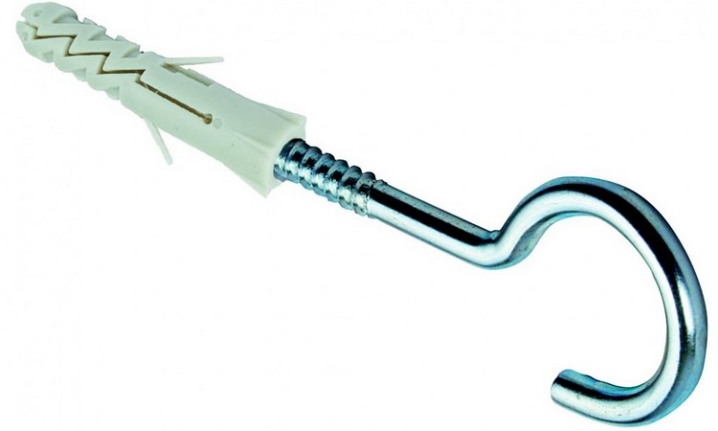
When choosing and buying, be sure to consider what the purchased dowel hook looks like. Each of them has certain parameters, properties and is intended for a specific material.
More detailed information and other models of fasteners can be found in any hardware store.
Scope of use
The available assortment and excellent physical and technical properties make it possible to use this fastener in solving a number of construction and installation problems.
- Fastening water heaters and heating devices to walls made of almost any material (except metal).
- Installation of pipelines. Using these dowels, the pipes are fixed at a certain height from the floor and at the right distance from the walls.
- Installation of plumbing equipment.

Very often in their practice, such products are used by electricians during the installation of electrical wiring and when installing lighting devices, for example, when hanging lamps from the ceiling.
Mounting
It is quite simple to install the dowel into the wall, in addition, the process does not take much time. But before starting work, you need to prepare the necessary tool, namely: an electric drill, drill, electrical tape, hammer.

The installation process consists of several stages.
- Mark the mounting location on the surface.
- Make a small indentation at the mark. You can use a knife or nail for this.
- Install a drill in an electric drill depending on the surface material (concrete or wood) and the diameter of the fastener.
- In the previously marked place, drill a hole for the dowel hook. The depth of the hole should be slightly deeper than the length of the dowel itself.
- At the last stage, the dowel hook is simply inserted into the recess and screwed in with the hook until it stops.
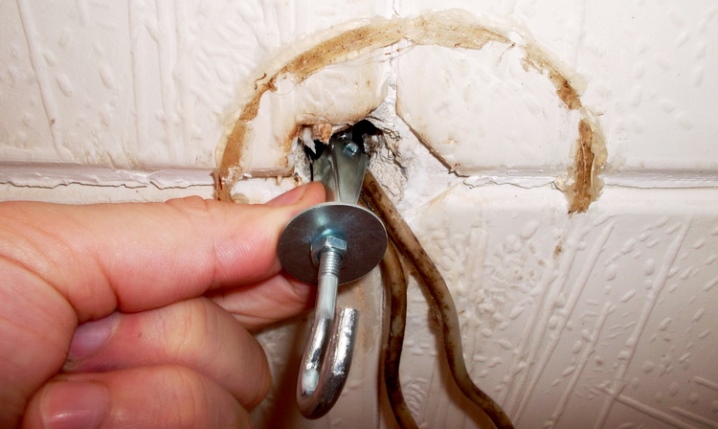
As you can see, everything is quite simple. The most important thing is having the skills to use an electric drill.
It is very important to use the fasteners correctly in the future. Do not overload it, take into account its limiting passport characteristics.
For more information about the dowel hook, see the video below.













The comment was sent successfully.